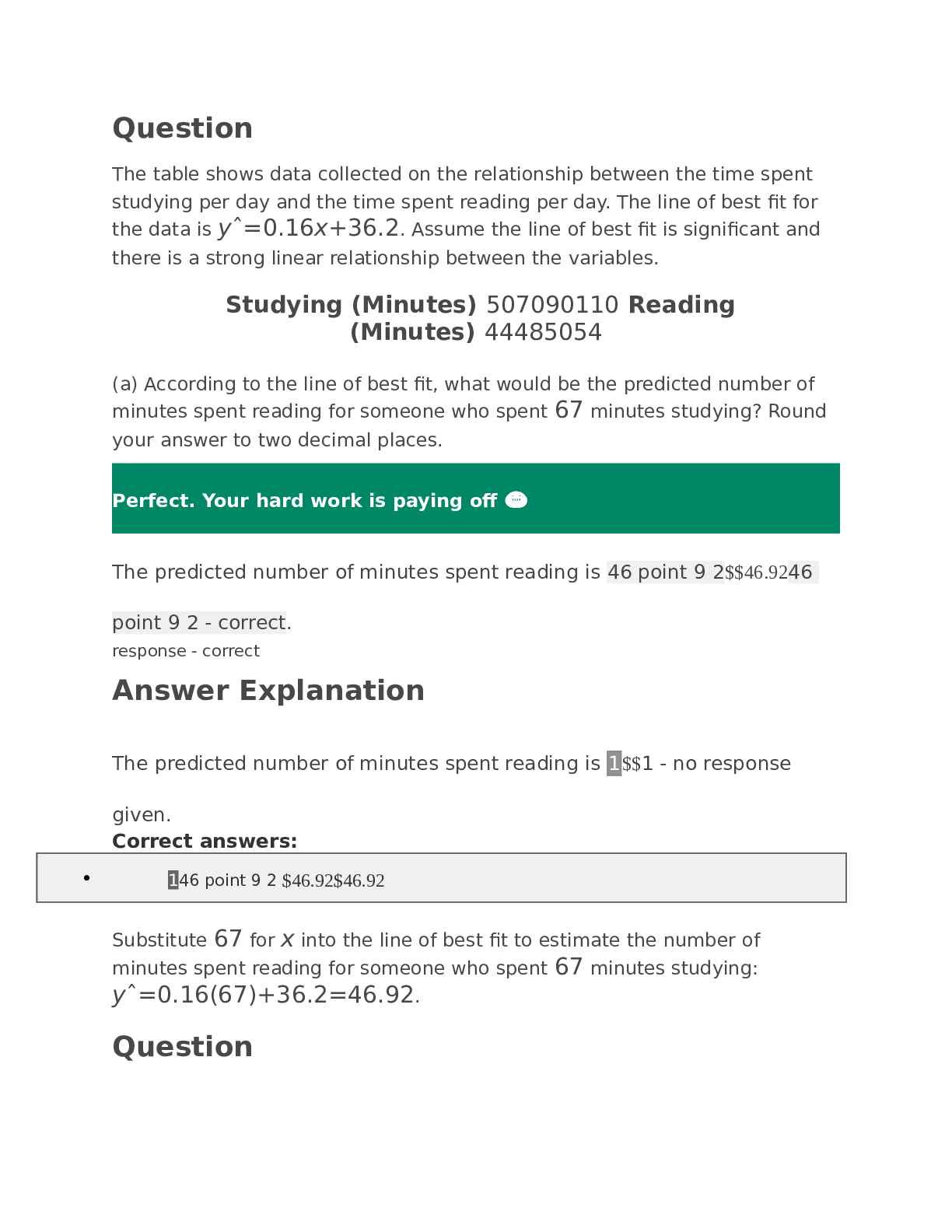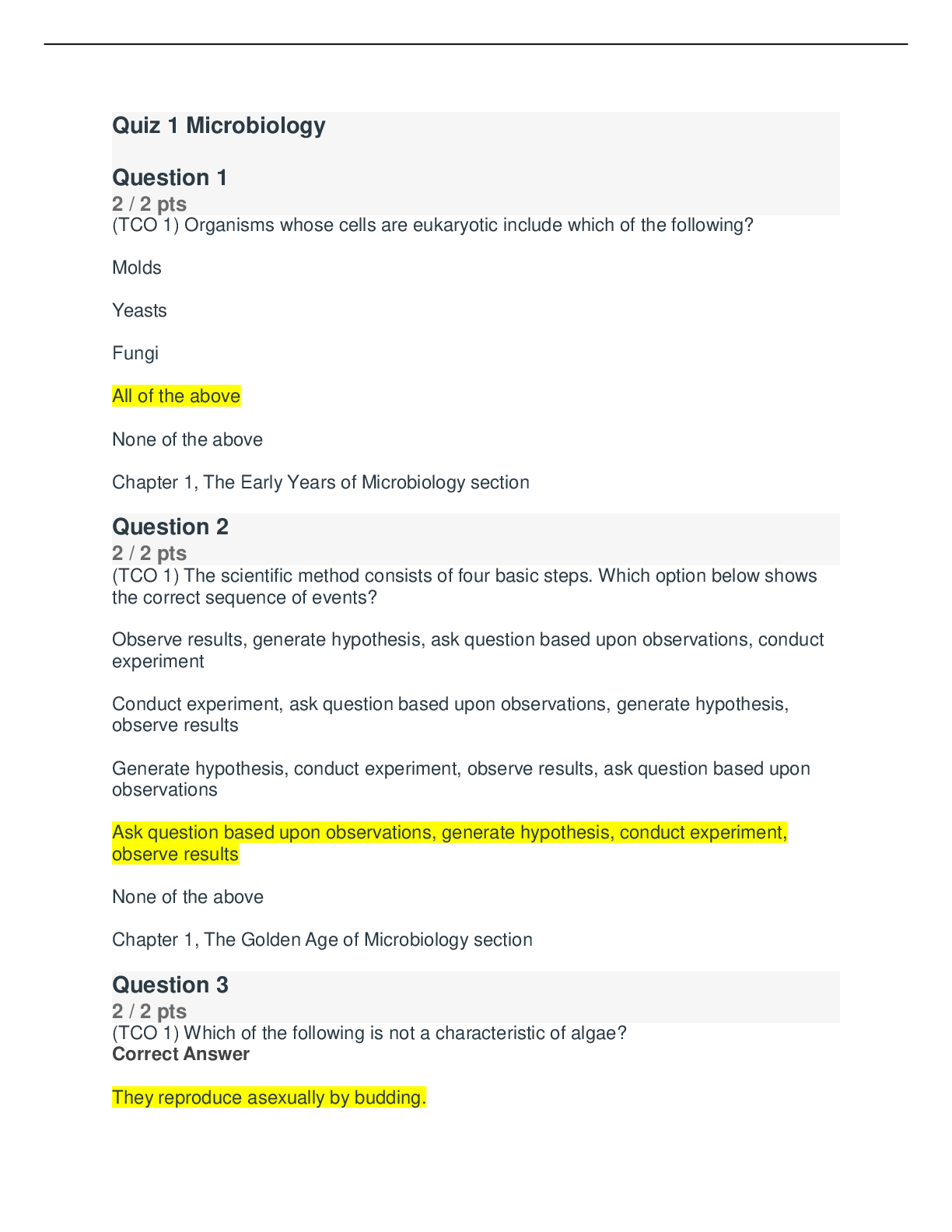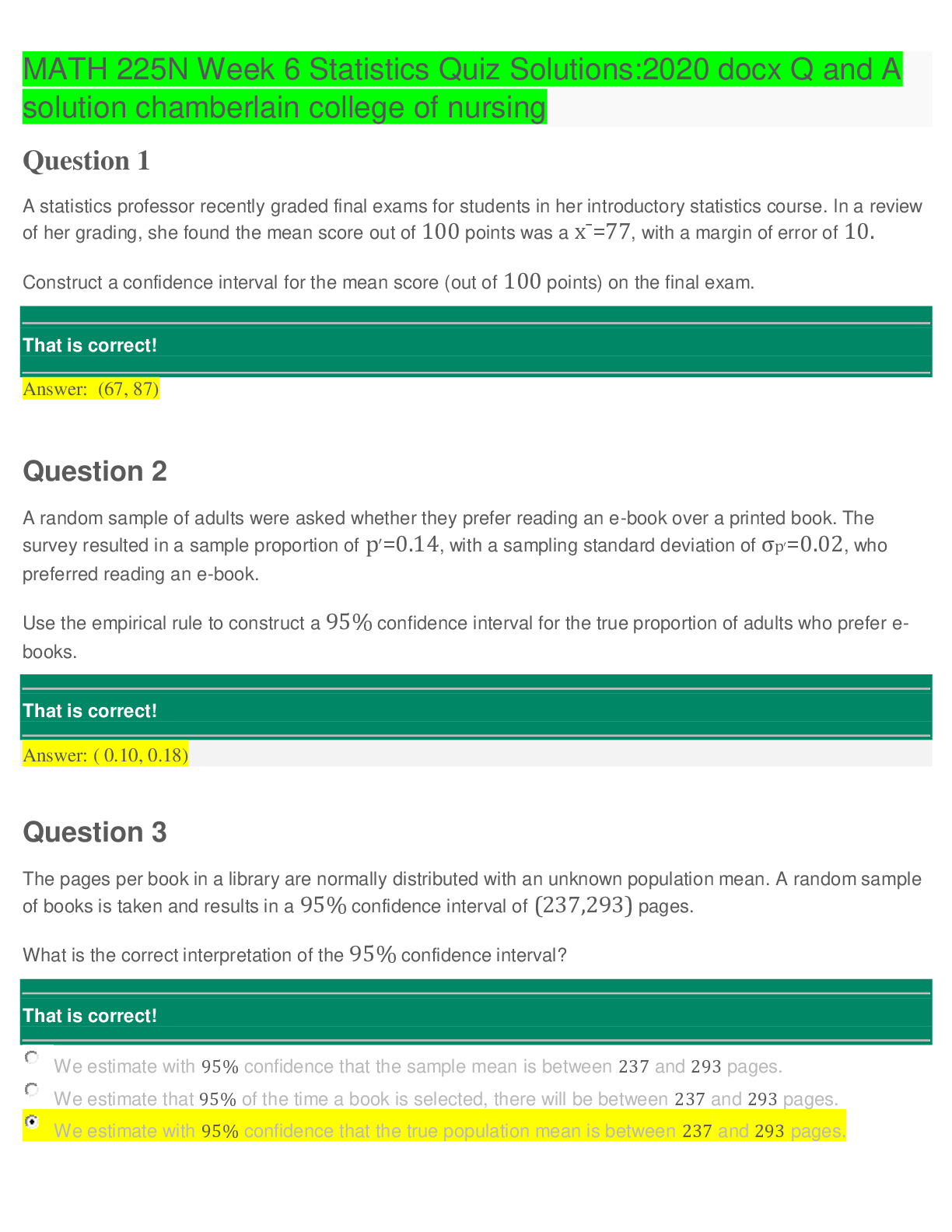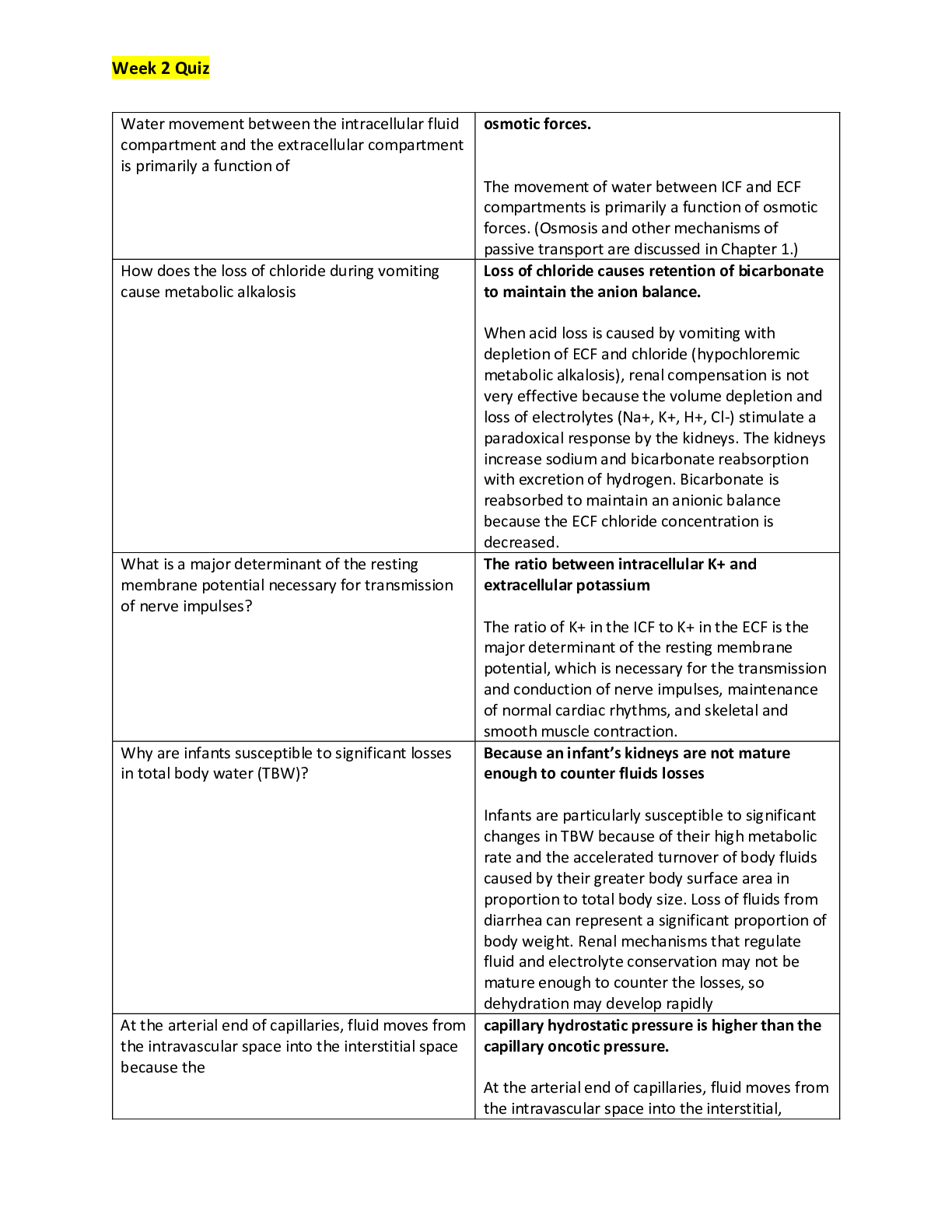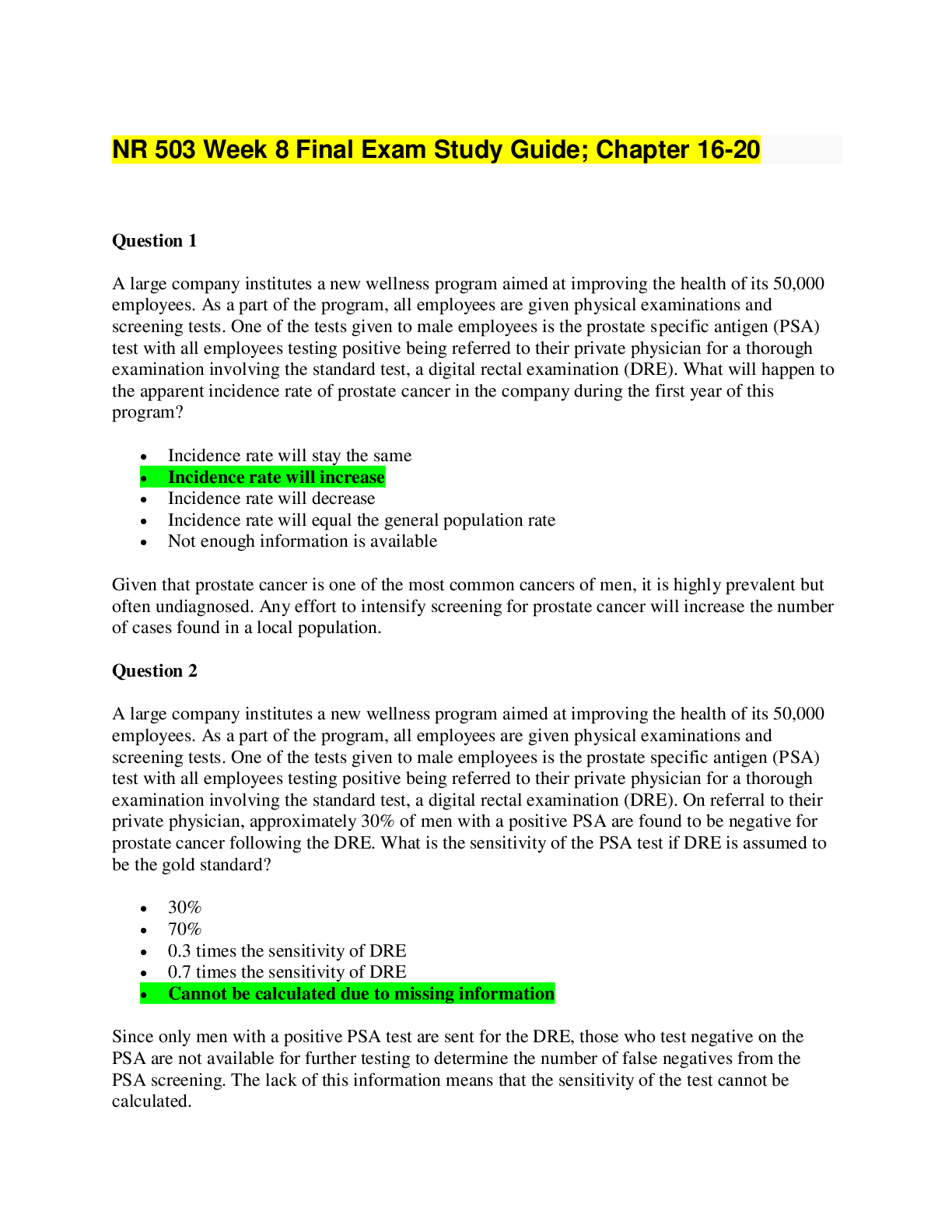Health Care > QUESTIONS & ANSWERS > NR 304 Final Exam (Latest-2021/2022): Chamberlain College of Nursing |100% Correct Q & A| ON THE LAS (All)
NR 304 Final Exam (Latest-2021/2022): Chamberlain College of Nursing |100% Correct Q & A| ON THE LAST PAGE
Document Content and Description Below
NR 304 Final Exam practice Comprehensive 302/304 Answers on last page 1. Which assessment by the nurse most likely indicates that a patient is having difficulty breathing? a. 18 breaths per minute... and inhaled through the mouth b. 20 breathes per minute and shallow in character c. 16 breaths per minute and deep in character d. 28 breaths per minute and noisy 2. Which should a nurse always do when taking a rectal temperature? a. Allow self-insertion of the thermometer. b. Position the patient on the left side. c. Use an electronic thermometer. d. Lubricate the thermometer. 3. A nurse is assessing a patient’s ideal body weight. Which significant factor should be takin into consideration when performing this assessment? a. Daily intake b. Body height c. Clothing size d. Food preferences 4. A nurse asks a patient’s wife specific questions about the patient’s health status before admission. When collecting this information, the nurse is seeking information from a: a. Primary source b. Tertiary sources c. Subjective source d. Secondary source 5. A nurse is preforming a physical assessment of a newly admitted patient. Which patient statement communicates subjective data? a. “I have sores between my toes.” b. “I dye my hair but it is really gray.” c. “My joints hurt when I get up in the morning.” d. “My left leg drags on the floor when I am walking.” 6. A nurse takes a patient’s blood pressure and records a diastolic pressure of 120 mm Hg. Which should the nurse do first? a. Notify the primary health-care provider. b. Retake the blood pressure. c. Notify the nurse in charge. d. Take the other vital signs. 7. A patient had a stroke that resulted in paralysis of the right side. When clustering data, the nurse grouped the following together: drooling of saliva and slurred speech. Which information is most significant to include with this clustered data? a. Receptive aphasia b. Inability to ambulate c. Difficulty swallowing d. Incontinence of bowel movements 8. A patient who experienced a stroke has left-sided hemiparesis and is incontinent of urine. Which is an appropriately worded nursing diagnosis for this patient? a. The patient has a need to maintain skin integrity. b. The patient has a stroked evidenced by hemiparesis and incontinence. c. The patient will be clean and dry and will receive range-of-motion exercises every four hours. d. The patient is at risk for impaired skin integrity related to left-sided hemiparesis and incontinence. 9. A nurse uses the interviewing process of clarification when interviewing a patient. Which is the nurse doing when this communication technique is used? a. Paraphrasing the patient’s message b. Restating what the patient has said c. Reviewing the patient’s communication d. Verifying what is implied by the patient 10. A patient has dependent edema of the ankles and feet and is obese. Which diet should the nurse expect the primary health-care provider to order? a. Low in sodium and high in fat b. Low in sodium and low in calories c. High in sodium and high in protein d. High in sodium and low in carbohydrates 11. A patient who is undergoing cancer chemotherapy says to the nurse, “This is no way to live.” Which response uses reflective techniques? a. “Tell me more about what you are thinking.” b. “You sound discouraged today.” c. “Life is not worth living?” d. “What are you saying?” 12. A nurse is assessing a patient who reports being incontinent. Which question should the nurse ask to elicit information related to urge incontinence? a. “Does urination occur immediately after coughing?” b. “Do you urinate small amounts of urine frequently?” c. “Do you begin urinating immediately after feeling the need to urinate?” d. “Does urination occur at predictable intervals without feeling the need to urinate?” 13. Which is the most common reason why older adults become incontinent of urine? a. They use incontinence to manipulate others. b. The muscles that control urination become weak. c. They tend to drink less fluid than younger patients. d. Their increase in weight places pressure on the bladder. 14. What is the nurse doing when formulating a nursing diagnosis? a. Planning b. Assessing c. Analyzing d. Implement [Show More]
Last updated: 1 year ago
Preview 1 out of 18 pages

Reviews( 0 )
Document information
Connected school, study & course
About the document
Uploaded On
Aug 12, 2022
Number of pages
18
Written in
Additional information
This document has been written for:
Uploaded
Aug 12, 2022
Downloads
0
Views
40




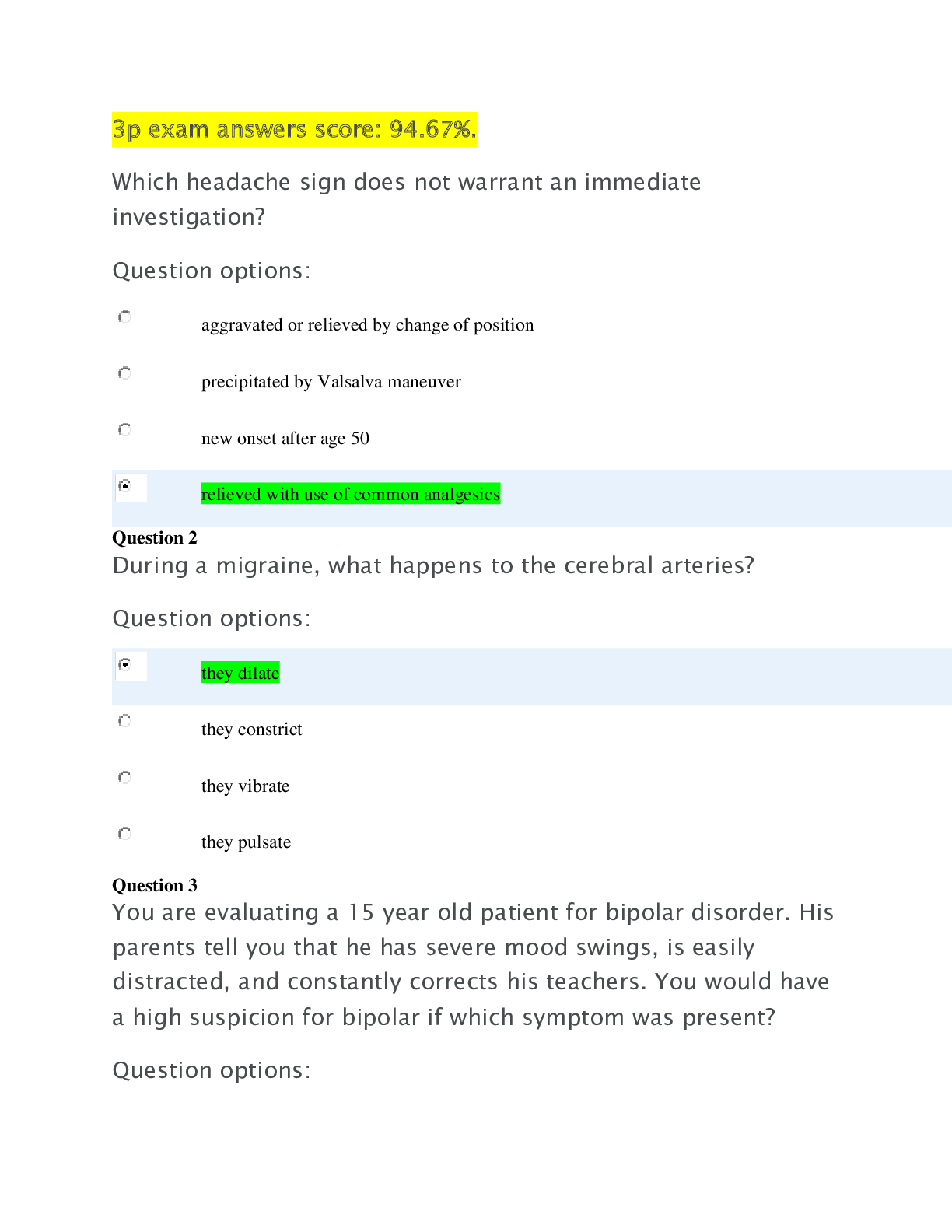

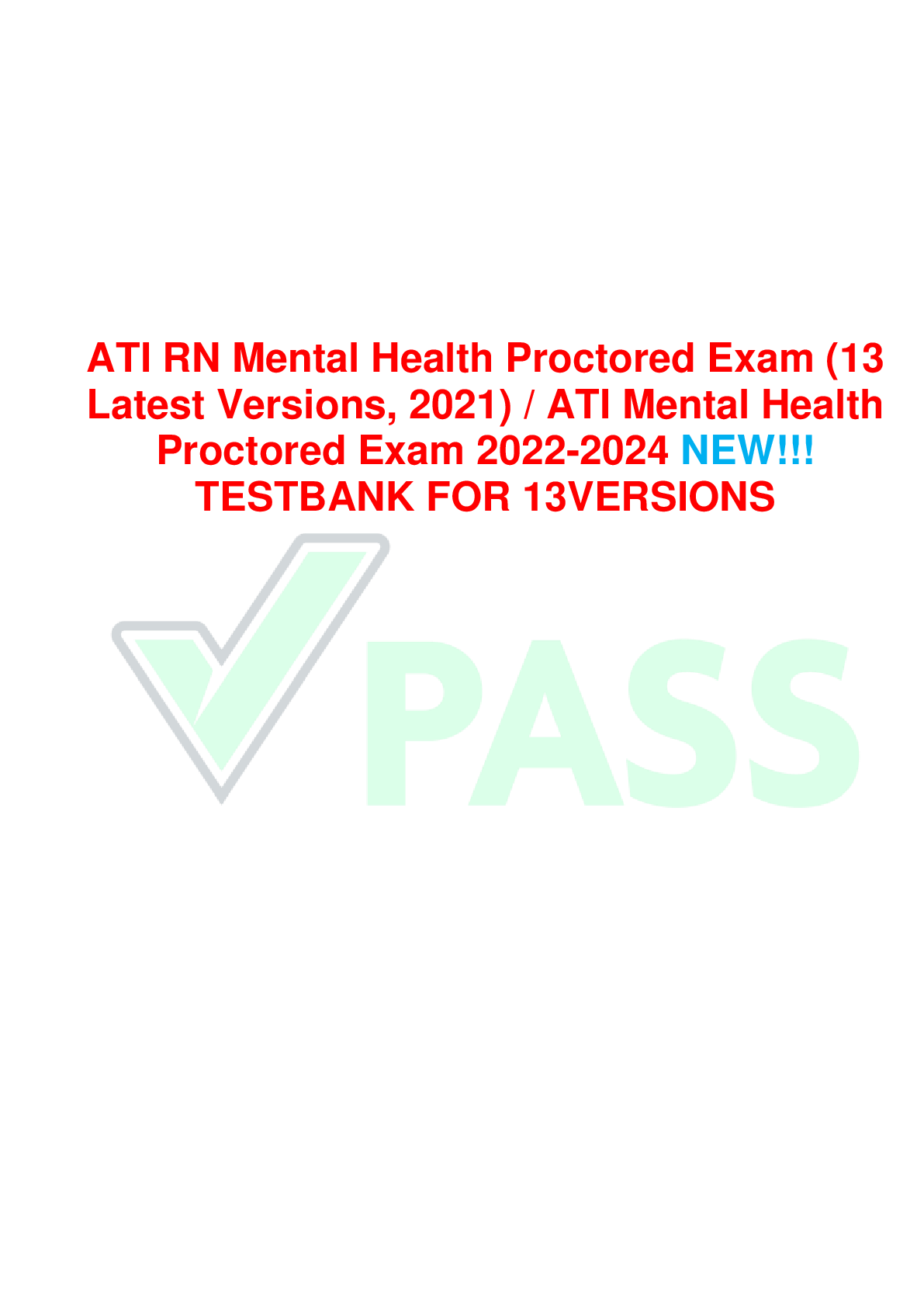
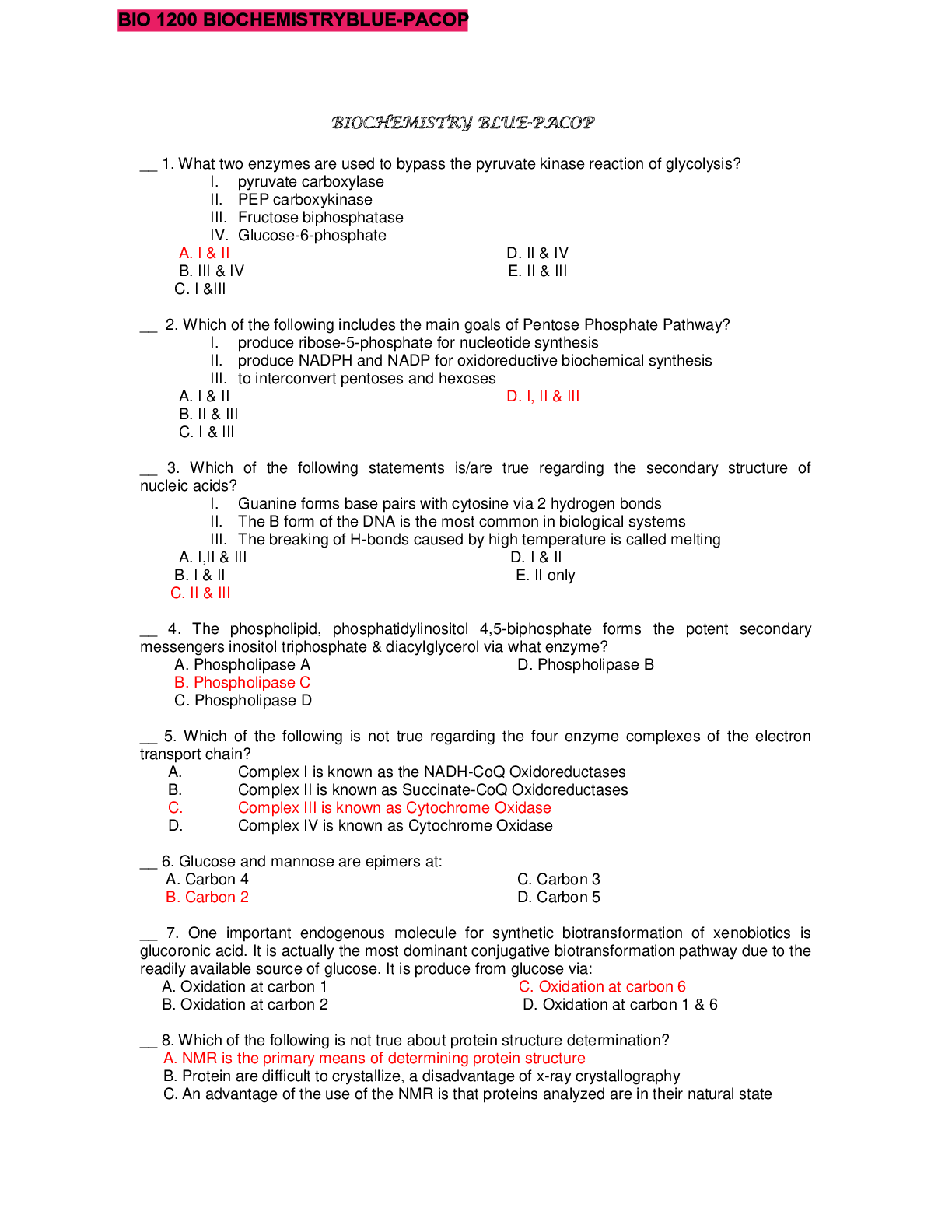
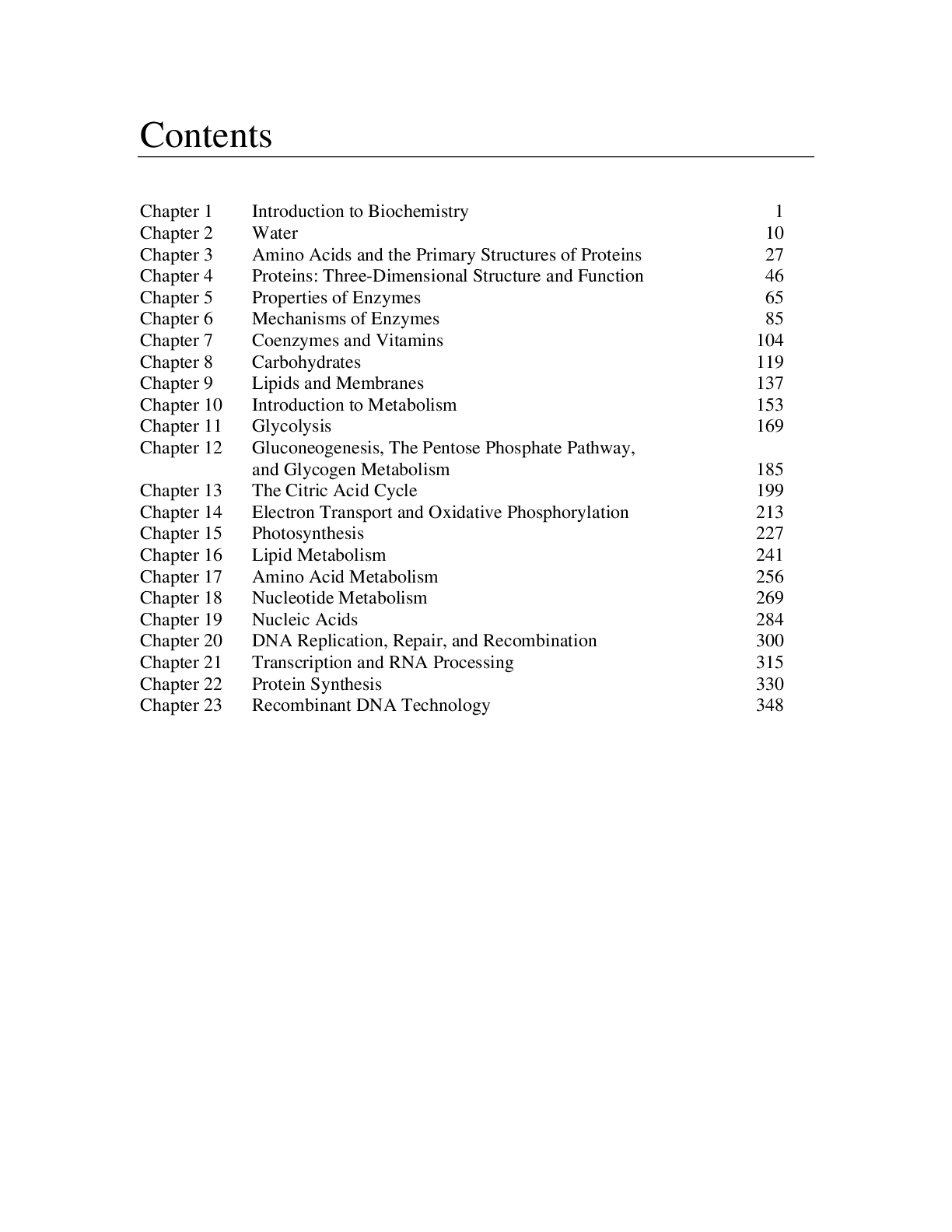
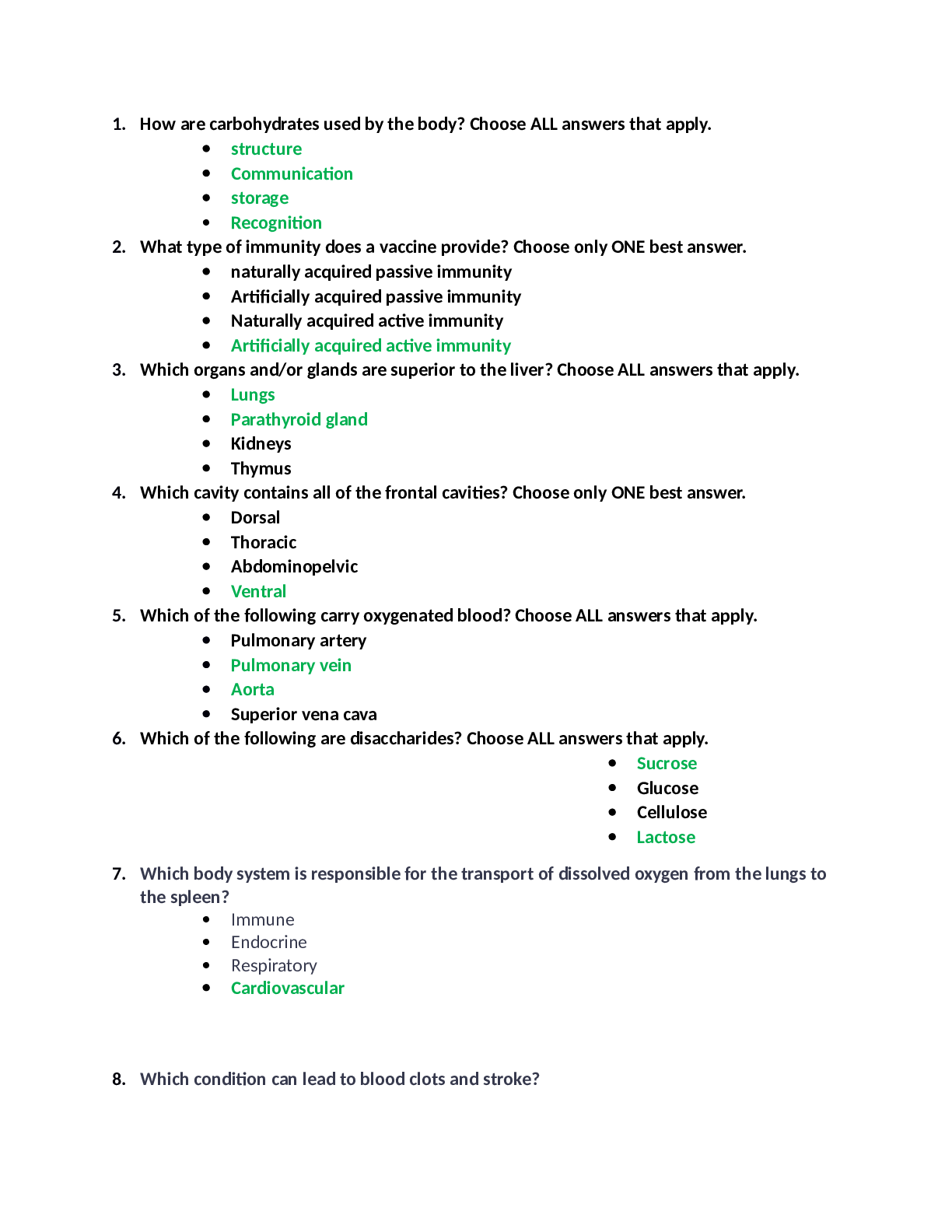

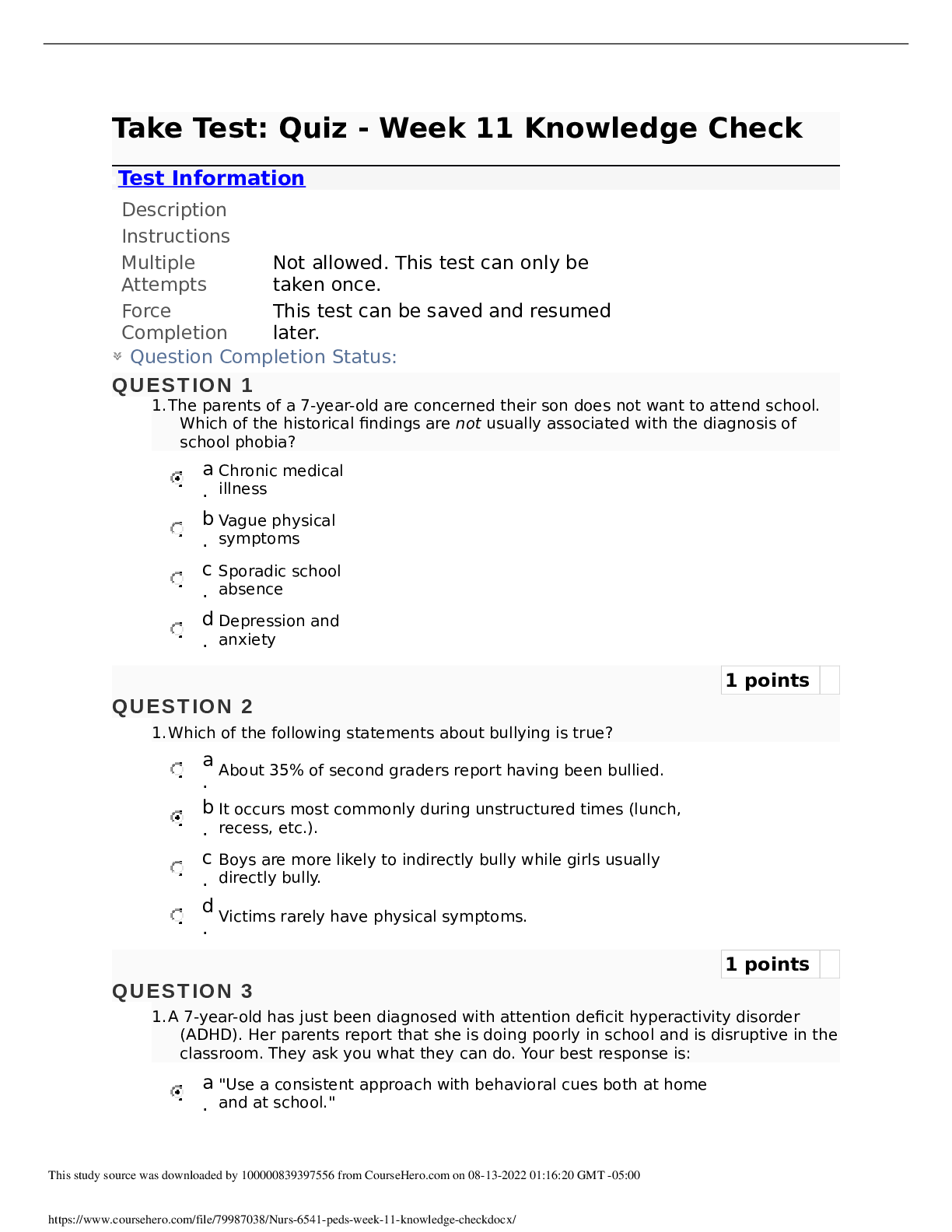

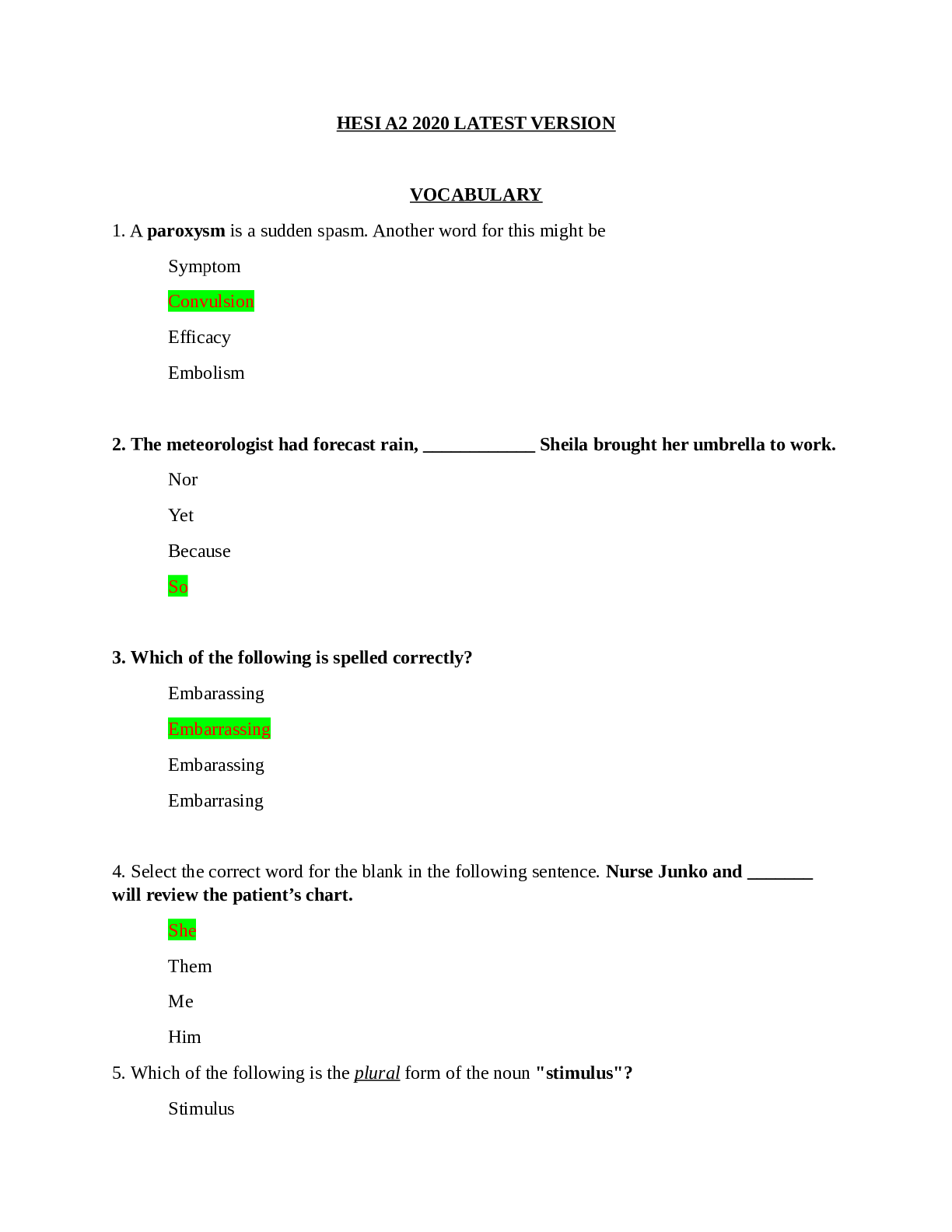
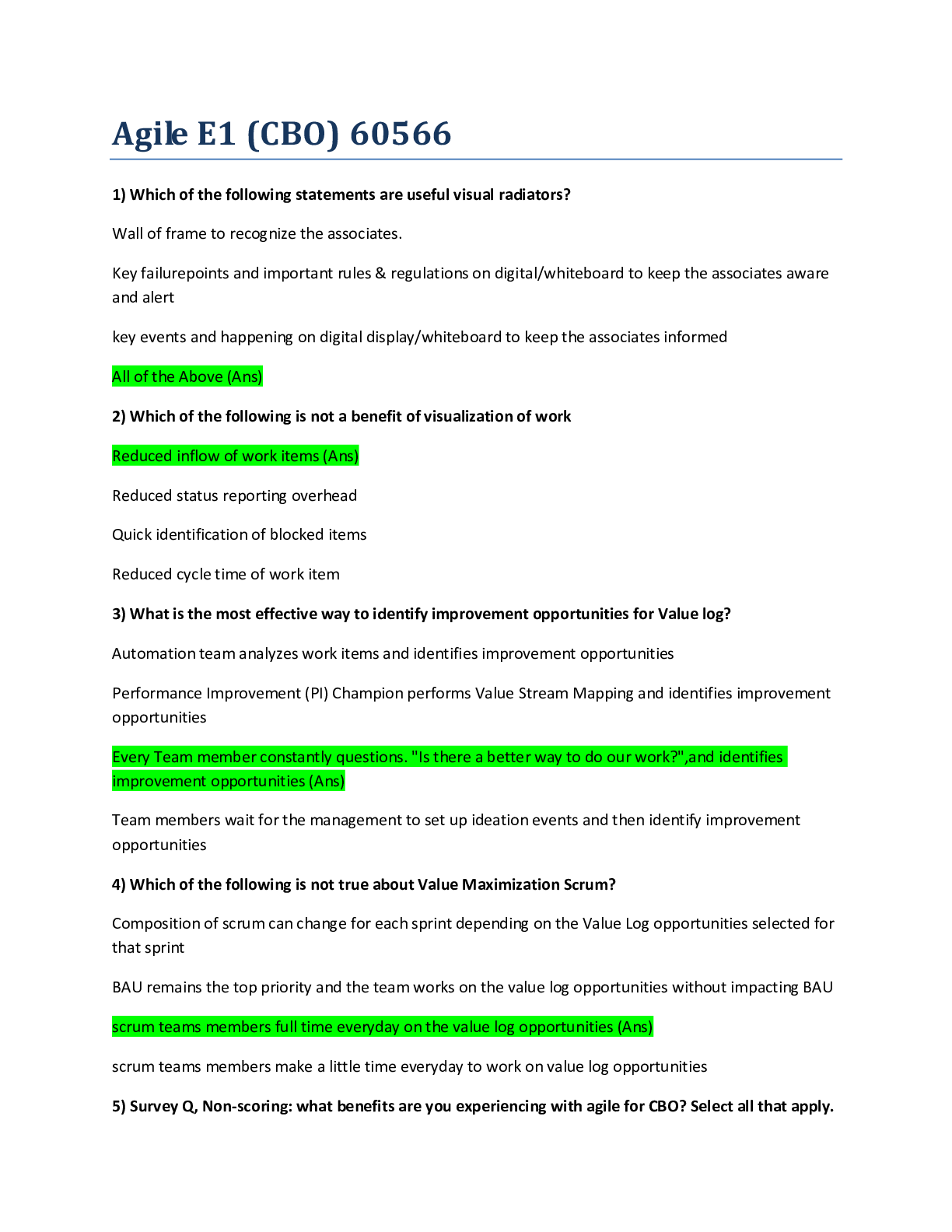
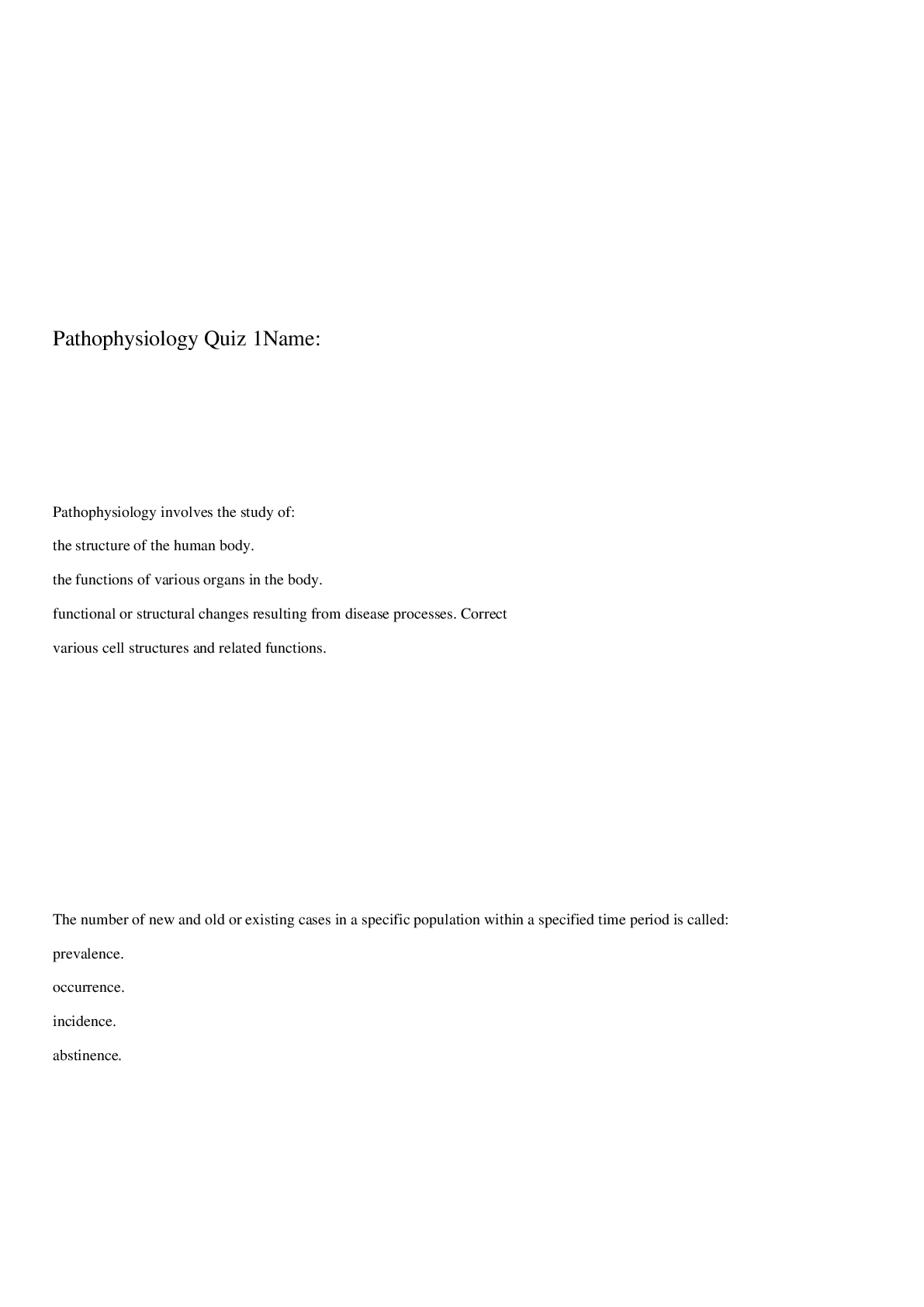



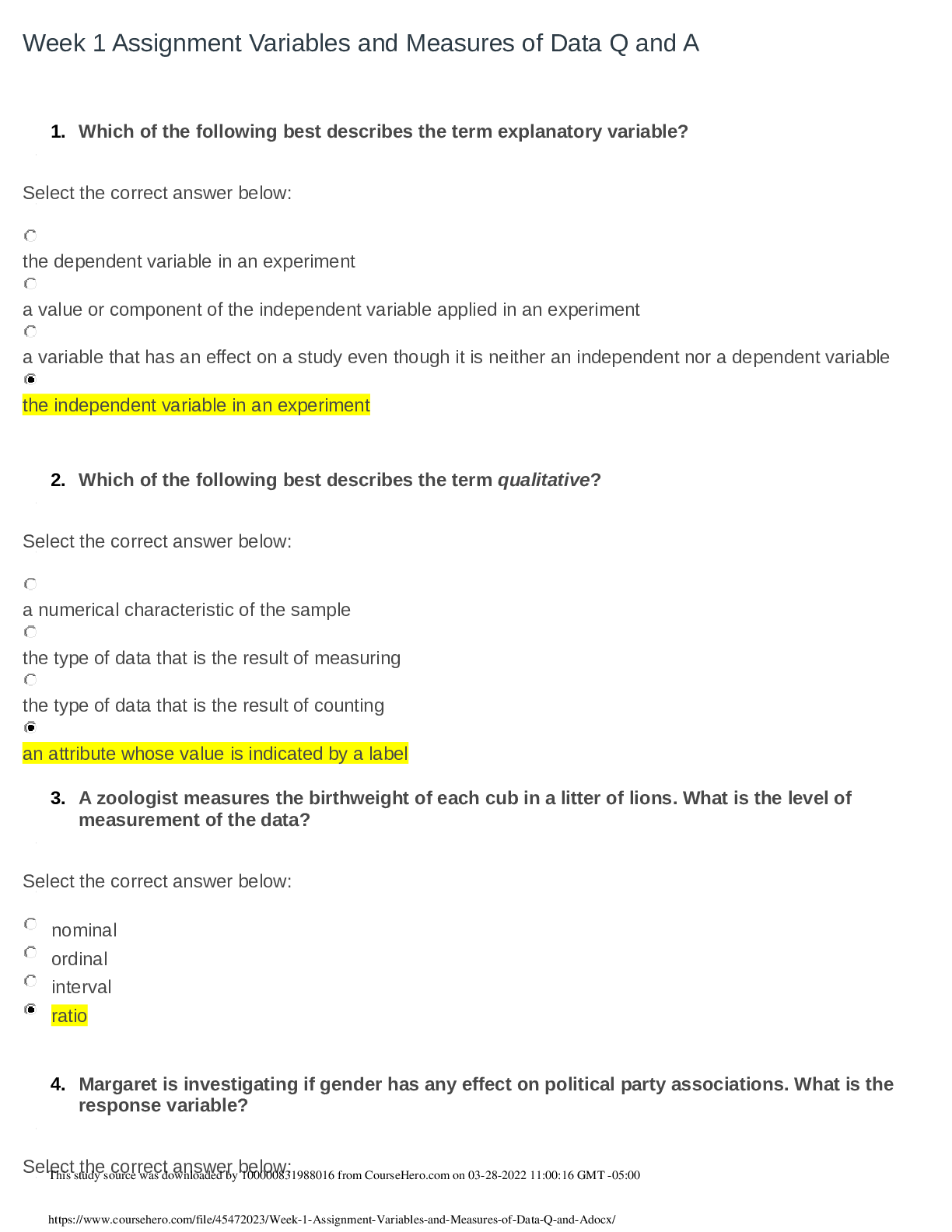




.png)
